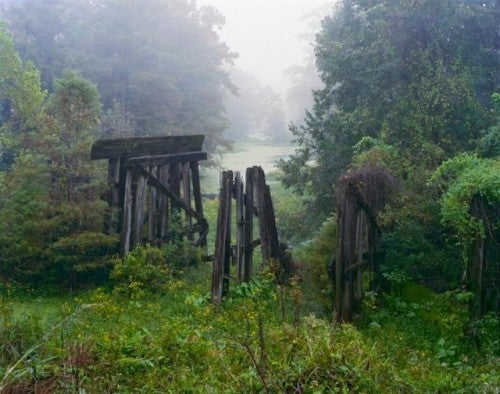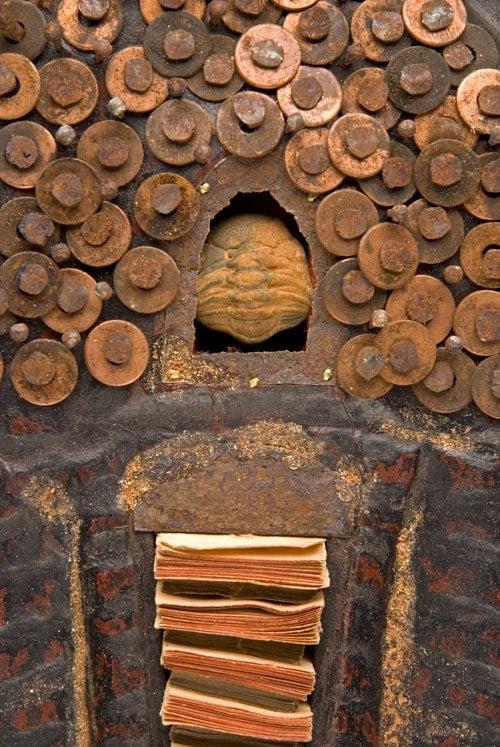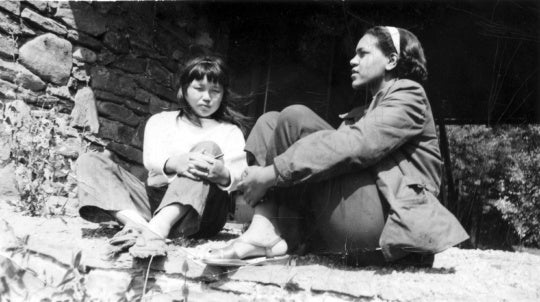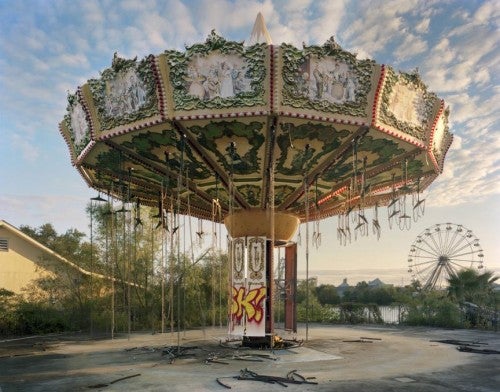
Andrew Moore’s mini-show “The South,” at Jackson Fine Art through March 14, presents six new prints that constitute the very beginning of a project. In the past, Moore has built lengthy cycles of work around specific places, such as Cuba, Russia, and Detroit, the latter of which comprises 70 images. In “The South,” Moore’s facility as a veteran photographer is evident. His works evoke large spaces and transition between passages of light and color. Most of them are 5 feet in width, occupying a large portion of a viewer’s field of vision. At this scale, they feel roughly human sized.
Zydeco Zinger is shot in an abandoned New Orleans Six Flags amusement park that never reopened after the Hurricane Katrina flooding. The Zinger is a version of a ride found in many amusement parks—swings are suspended from a large spinning apparatus that propels riders upward and outward, mixing the pleasure of speed with the thrill and vertigo of simulated flight. In Moore’s photo, the swings hang limply and unevenly from their chains. The horizon is low, pushing the ground down to the bottom quarter of the picture, which exaggerates the vastness of the sky and the chalicelike form of the Zinger that rises up in front of it. The bowl of this chalice bears carnival decorations that seem baroque in this context, contrasting with the red and yellow graffiti on the stem that holds it up. The sunlight raking in from the right side casts a creamy warm light, and the clouds are in a roughly linear pattern, as if radiating from some hidden point behind the fairground ride.
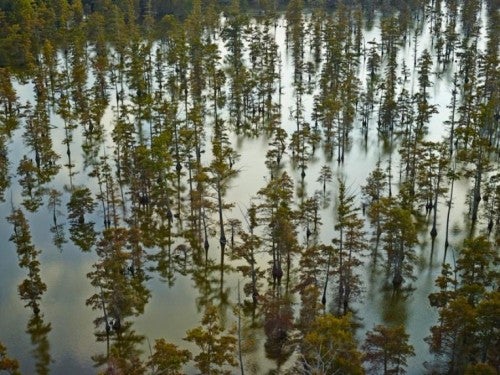
Moore eliminates the horizon altogether in Beaver Dam Lake, Tunica, Mississippi. The scene, of a forested lake shot from high overhead, is the most abstract work in the show due to the unusual vantage point of the camera and the particular reflective qualities of the water. Moore took this photo with a camera mounted on the wing of a crop duster. We look down on evenly spaced trees emerging from a plane of water. The water mirrors the trees clearly, so they appear to be reaching up and down simultaneously. This mirror is elusive-—what at first appears to be mist turns out to be a reflected cloudscape. From the high vantage point, the ripples on the surface become a fine texture, giving the lake the appearance of beaten metal in some spots.
Moore titles his works after their locations. Photography often serves a descriptive function, but Moore does not play the role of informant. Instead, he uses locations as material from which he can extract painterly images, studies of color, and observations of the nature of light. A raking evening light unevenly illuminates the facade of a grand but dilapidated home in Mrs. Carla Hornsby, Twiggs St., 2014. The roof and second story fall back into a grayish blue light and behind it gold and auburn leaves are flanked by more verdant greens. Church Interior, Clarkesdale, Mississippi 2014 seems to be simply a color study of a green and magenta curtain, and the manner in which those colors reflect off of an askew drum cymbal in the foreground.
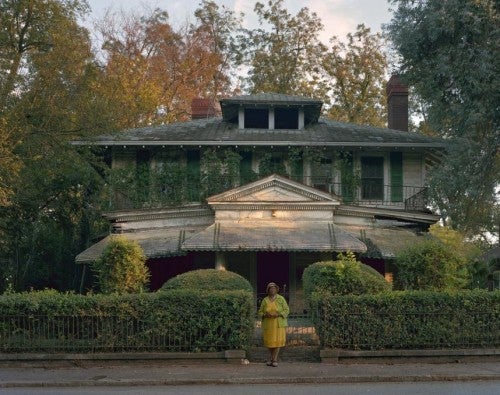
Old Highway 61 (Trestle), Tunica, Mississippi, 2014 presents us with a mist-shrouded passage between parting curtains of forest. Moore coaxes violet and gray gradients out of the receding foliage. The decayed wooden trestles rise like totems from the undergrowth.
Pictures can be informative, but they can also prioritize visual experience over information. Moore himself may be uncertain about negotiating these options. Highlighting place with title cues us in to the legitimacy of the subject: Moore wants us to know that these places are real. At the same time, they are very clearly extractions chosen for their visual malleability. These pictures are crafted in such a way that we really wouldn’t see them if we traveled to the locations. Their formal gamesmanship and aesthetic preoccupations argue for primacy of the artist’s vision, while the titles hint at documentary credibility.
“The South” is a grouping of well-executed and beautiful photographs. Scale and color bolster evocative qualities in each work. Moore demonstrates his concerns here with abstraction and transformation. Narratives of place are available to the viewer who really wants them, but the significant gestures in these works have little to do with reality and everything to do with the subjectivity of the artist.
Orion Wertz is a painter and graphic novelist living in Columbus, Georgia. He is a professor at Columbus State University, where he teaches drawing and painting. He is a finalist for the 2015 Hudgens Prize.
